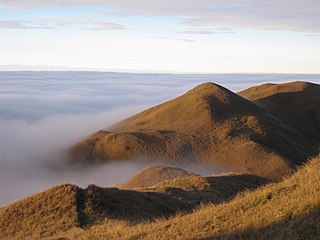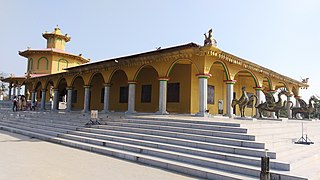
The veneration of the dead, including one's ancestors, is based on love and respect for the deceased. In some cultures, it is related to beliefs that the dead have a continued existence, and may possess the ability to influence the fortune of the living. Some groups venerate their direct, familial ancestors. Certain religious groups, in particular the Eastern Orthodox Churches, Catholic Church and Anglican Church venerate saints as intercessors with God; the latter also believes in prayer for departed souls in Purgatory. Other religious groups, however, consider veneration of the dead to be idolatry and a sin.

The Akha are an ethnic group who live in small villages at higher elevations in the mountains of Thailand, Myanmar, Laos and Yunnan Province in China. They made their way from China into Southeast Asia during the early 20th century. Civil war in Burma and Laos resulted in an increased flow of Akha immigrants and there are now 80,000 people living in Thailand's northern provinces of Chiang Rai and Chiang Mai.
A gope board is a wooden ritual object made in the Papuan Gulf of New Guinea. Each board represents the spirit of an ancestral hero that can protect clans from evil spirits and death.

Cordyline fruticosa is an evergreen flowering plant in the family Asparagaceae. The plant is of great cultural importance to the traditional animistic religions of Austronesian and Papuan peoples of the Pacific Islands, New Zealand, Island Southeast Asia, and Papua New Guinea. It is also cultivated for food, traditional medicine, and as an ornamental for its variously colored leaves. It is identified by a wide variety of common names, including ti plant, palm lily, cabbage palm.
A jengu is a water spirit in the traditional beliefs of the Sawabantu groups of Cameroon, like the Duala, Bakweri, Malimba, Subu, Bakoko, Oroko people. Among the Bakweri, the term used is liengu. Miengu are similar to bisimbi in the Bakongo spirituality and Mami Wata. The Bakoko people use the term Bisima.

The culture of Papua New Guinea is complex and multifaceted. It is estimated that more than 7000 different cultural groups exist in Papua New Guinea, and most groups have their own language. Because of this diversity, in which they take pride, many different styles of cultural expression have emerged; each group has created its own expressive forms in art, dance, weaponry, costumes, singing, music, architecture and much more. To unify the nation, the language Tok Pisin, once called Neo-Melanesian has evolved as the lingua franca — the medium through which diverse language groups are able to communicate with one another in Parliament, in the news media, and elsewhere. People typically live in villages or dispersed hamlets which rely on the subsistence farming of yams and taro. The principal livestock in traditional Papua New Guinea is the oceanic pig.

The Igala people are an ethnicity located in the region south of the confluence of the Niger and Benue Rivers. They are located in an ecologically diverse region of Nigeria, ideal for farming a wide array of crops, and have been influenced by many surrounding cultures. The Igala kingdom is ruled ceremonially and culturally by the Attah and has a long history of political warfare with neighboring groups along the Benue. Igala people worship the supreme being Ojo, as well as their divine ancestral spirits. Masquerades are an important aspect of Igala art and is prime example of how the kingdom was influenced by neighboring communities. Igala art dating centuries back, also feature in Nigerian body decoration and cultural architecture. Igala are a majority ethnic group in the southern and eastern lands of Kogi State and a major tribe in Kogi state politics. In times past, the Igala have held key state government positions. While the present kingdom has diminished in size, Igala people and their culture have been an integral part of the formation of the communities along the Niger river, with many communities claiming origins from Idah, the ancestral home of the Igala. Minorities of the group exist in Edo.

Indigenous Philippine folk religions are the distinct native religions of various ethnic groups in the Philippines, where most follow belief systems in line with animism. Generally, these Indigenous folk religions are referred to as Anito or Anitism or the more modern and less ethnocentric Dayawism, where a set of local worship traditions are devoted to the anito or diwata, terms which translate to gods, spirits, and ancestors. 0.23% of the population of the Philippines are affiliated with the Indigenous Philippine folk religions according to the 2020 national census, an increase from the previous 0.19% from the 2010 census.
Gogodala is the name of an ethnic/language group from the Middle Fly District of the Western Province of Papua New Guinea. They speak the Gogodala language, which belongs to the Trans-New Guinea language family. It is one of about a thousand distinct ethnic groups in the country, each which has its own language and culture.

The Asmat are an ethnic group of New Guinea, residing in the province of South Papua, Indonesia. The Asmat inhabit a region on the island's southwestern coast bordering the Arafura Sea, with lands totaling approximately 18,000 km2 (7,336 mi2) and consisting of mangrove, tidal swamp, freshwater swamp, and lowland rainforest.

The beliefs and practices of African people are highly diverse, including various ethnic religions. Generally, these traditions are oral rather than scriptural and are passed down from one generation to another through folk tales, songs, and festivals, and include beliefs in spirits and higher and lower gods, sometimes including a supreme being, as well as the veneration of the dead, and use of magic and traditional African medicine. Most religions can be described as animistic with various polytheistic and pantheistic aspects. The role of humanity is generally seen as one of harmonizing nature with the supernatural.

Haus Tambaran is a Tok Pisin phrase which describes a type of traditional ancestral worship house in the East Sepik region of Papua New Guinea. The most visually recognizable forms are from the Maprik area, with a tall and elaborately decorated front entrance wall where the ridge pole slopes down low toward the back of the building and the roof follows this decline and often continues all the way to the ground. The Sepik people are renowned for their superb artistic ability in painting and carving, which is often exhibited in these religious structures.

The Tai folk religion, Satsana Phi or Ban Phi is the ancient native ethnic religion of Tai people still practiced by various Tai groups. Tai folk religion was dominant among Tai people in Asia until the arrival of Buddhism and Hinduism. It's primarily based on worshipping deities called Phi, Khwan and Ancestors.
In 1994, Jim Mason, a graduate student in the Department of Anthropology at Stanford University, arranged for two groups of men from the Sepik River region of Papua New Guinea to carve the New Guinea Sculpture Garden at Stanford University. The men were from several communities or villages of the Iatmul people and the Kwoma people.
The Urapmin people are an ethnic group numbering about 375 people in the Telefomin District of the West Sepik Province of Papua New Guinea. One of the Min peoples who inhabit this area, the Urapmin share the common Min practices of hunter-gatherer subsistence, taro cultivation, and formerly, an elaborate secret cult available only to initiated men.

The Sepik is the longest river on the island of New Guinea, and the second largest in Oceania by discharge volume after the Fly River. The majority of the river flows through the Papua New Guinea (PNG) provinces of Sandaun and East Sepik, with a small section flowing through the Indonesian province of Papua.

The Iatmul are a large ethnic group of about 10,000 people inhabiting some two-dozen politically autonomous villages along the middle Sepik River in Papua New Guinea. The communities are roughly grouped according to dialect of the Iatmul language as well as sociocultural affinities. The Iatmul are best known for their art, men's houses, male initiation, elaborate totemic systems, and a famous ritual called naven, first studied by Gregory Bateson in the 1930s. More recently, Iatmul are known as a location for tourists and adventure travellers, and a prominent role in the 1988 documentary film Cannibal Tours.

Kundu is a pidgin name in Papua New Guinea for an hourglass drum used to accompany formal occasions, religious ceremonies and for celebrations. This drum is emblematic of Papua New Guinea and it appears on the country's coat of arms.
Shamanism is a religious practice present in various cultures and religions around the world. Shamanism takes on many different forms, which vary greatly by region and culture and are shaped by the distinct histories of its practitioners.

The traditional architecture of Papua New Guinea (PNG) reflects the diversity and ingenuity of this Pacific Island nation, with over 850 different ethnic groups each with its own distinct architectural styles, techniques, and materials. Their typical buildings range from houses on stilts to ceremonial and spiritual centers.
















